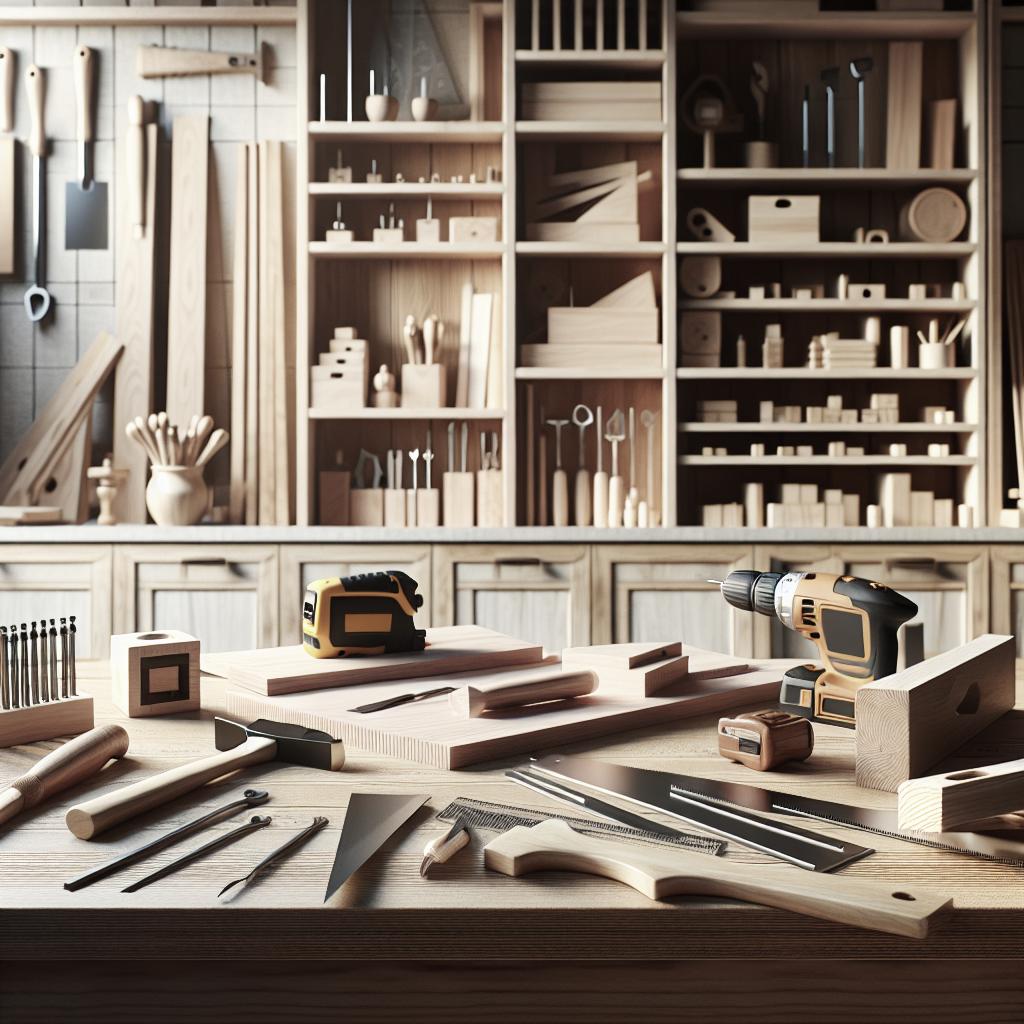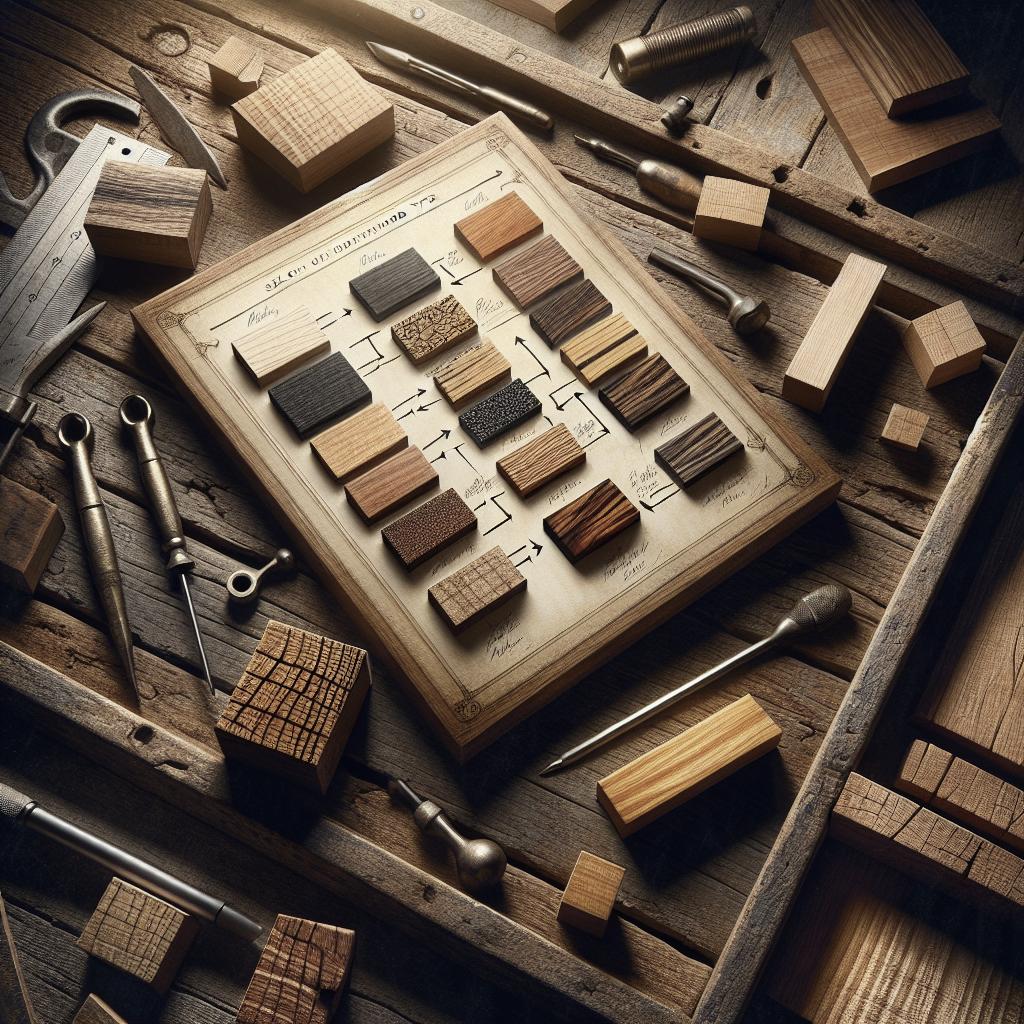“`html
The Best Lighting Techniques for a Woodworking Studio
Whether you’re a woodworking professional or a hobbyist, ensuring optimal lighting in your workshop is crucial. Good lighting not only enhances the precision of your work but also ensures safety and comfort. In this blog post, we’ll explore the significance of good lighting in a woodworking studio, determine how much light you actually need, and provide insights on how to enhance your workshop’s lighting. We’ll delve into various lighting options like central, focused, and mobile lighting, and highlight additional methods to optimize your workspace. Finally, we’ll summarize the key points in a comprehensive table, guiding you through the future prospects of your woodworking approach.
Importance Of Good Lighting In A Woodwork Shop
Good lighting plays a critical role in ensuring accuracy and precision in any woodworking project. It illuminates intricate patterns and helps identify blemishes or imperfections in the wood that might otherwise go unnoticed. This is indispensable for tasks that require meticulous attention to detail, such as joinery or carving.
Moreover, adequate lighting enhances safety in your workshop. Woodworking equipment like saws and drills can be hazardous if not used properly. Proper illumination helps in seeing and operating these machines safely, reducing the risk of accidents. Additionally, well-lit spaces are more inviting and can increase productivity by keeping fatigue and eye strain at bay.
How Much Light Do You Need?
The amount of light needed in a woodwork shop can vary, but a general rule is that a workspace should have around 300 to 500 lumens per square meter. This measurement can serve as a guideline to determine the brightness necessary for your workshop. Keep in mind the size of the work area and the kind of tasks you perform when choosing your lighting solutions.
Natural light is ideal, and if possible, it should be your primary source of illumination. However, depending on your workshop’s location or the time of day, relying solely on natural light may not be feasible. Consider supplementing with artificial lighting to ensure the workspace remains adequately lit at all times.
How To Improve The Lighting In Your Workshop
Central Lighting
Central lighting provides general illumination that spreads throughout your workshop. Installing overhead fixtures like LED panels or fluorescent lights can ensure even distribution, minimizing shadows and dark corners. LEDs are particularly advantageous due to their energy efficiency and longevity.
When planning your central lighting, take into account the height of your ceilings and the surface type of your walls and floors, as reflective surfaces can assist in diffusing light. Additionally, a dimmer switch can help adjust lighting intensity based on your requirements, offering flexibility and control.
Focused Lighting
Focused lighting, or task lighting, is designed to illuminate specific areas where precision work is executed. This can be achieved using adjustable lamps with directed beams that are great for workbenches or individual machines. Clamp lamps and gooseneck lamps provide versatility, allowing you to angle and direct light exactly where it’s needed.
Consider using halogen bulbs for focused lighting since they emit a warm, white light that closely resembles daylight, helping to render colors and details accurately. This is particularly beneficial when selecting the correct wood grains or ensuring clean cuts.
Mobile Lighting
Mobile lighting offers flexibility, allowing you to reposition light sources depending on your workshop’s changing needs. Portable LED work lights and headlamps are excellent solutions, especially if you have temporary setups or your work occasionally spills into different areas of the workshop.
Battery-operated or rechargeable options are convenient for mobility and prevent cumbersome cords from cluttering your workspace. The portability of these lights makes them ideal for those impromptu late-night projects that require extra illumination.
Methods Other Than Lighting
Beyond lighting fixtures, mirrors and reflective surfaces can significantly improve the light distribution in your workshop. Strategically placed mirrors can reflect light, brightening dim areas and creating an illusion of more space.
Another non-lighting method involves choosing the right colors for your workshop walls. Light-colored paints or finishes, particularly white or pastel hues, can reflect more light than darker shades, naturally brightening the space without additional lights.
Future Prospects
In summary, the right lighting can transform your woodworking studio into a more productive, safe, and comfortable environment. By understanding your lighting needs and strategically incorporating central, focused, and mobile lighting solutions, you can enhance your workflow significantly. Don’t overlook the influence of reflective methods and the power of color choices in maximizing your space’s natural and artificial lighting.
Here’s a quick overview to guide your lighting improvements:
| Lighting Techniques | Description |
|---|---|
| Central Lighting | Provides general illumination with overhead fixtures like LEDs or fluorescents. |
| Focused Lighting | Task lighting using adjustable lamps for specific tasks requiring precision. |
| Mobile Lighting | Portable lights like LED work lights and headlamps for flexibility and mobility. |
| Methods Other Than Lighting | Utilizing mirrors, reflective surfaces, and light-colored paints to enhance light distribution. |
Leave a Comment
We’d love to hear from you! Share your thoughts, questions, or additional tips on how to light up a woodworking studio effectively. Leave a comment below!
“`


